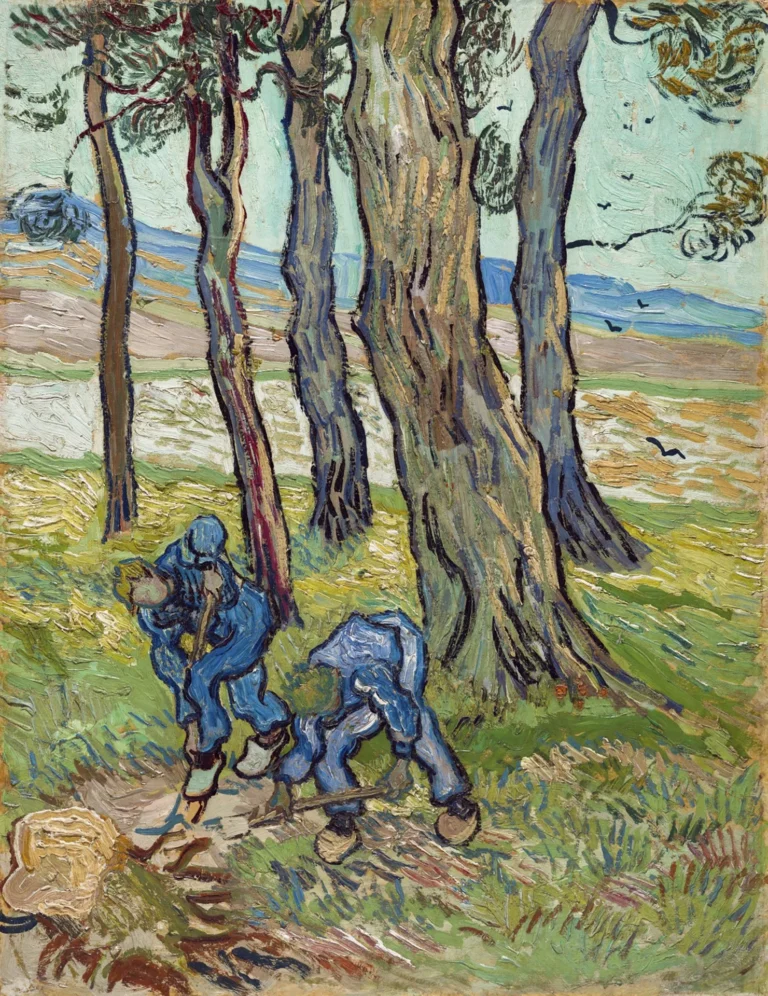The Diggers (1889)
Created in late 1889, The Diggers is a stunning oil painting by Vincent van Gogh that illustrates two men laboriously digging up a tree stump. This piece not only demonstrates Van Gogh's unique style, characterized by bold brush strokes and rich colors, but it also reflects his admiration for the hard work of rural laborers, a recurring theme in his body of work. The painting resides at the Detroit Institute of Arts and offers a glimpse into the artist's life during his stay at the asylum in France.
Late 1889
About the Artwork
Vincent van Gogh painted The Diggers during a transformative period of his life while residing in an asylum in Saint-Rémy-de-Provence. This artwork displays his profound connection to nature and the dignity of labor, inspired by the works of Jean-François Millet. The painting has an intricate provenance, passing through various collectors before being donated to the Detroit Institute of Arts. It has faced scrutiny regarding ownership, particularly during the post-World War II period, but investigations have upheld the legitimacy of its sales. Despite its lower monetary value compared to other Van Gogh masterpieces, The Diggers exemplifies his evolving artistry and thematic interests that resonate with viewers.
Did You Know
Vincent van Gogh was greatly influenced by the works of Jean-François Millet, a 19th-century French painter known for depicting rural laborers, which is evident in the thematic focus of The Diggers.
In 2004, descendants of Hugo Nathan’s wife claimed The Diggers was sold under duress during the Nazi era, but investigations revealed the sale was conducted voluntarily and consistent with market rates at the time.
During his stay at the Saint-Rémy asylum, Van Gogh produced some of his most notable works, as the tranquil yet challenging environment provided him inspiration, helping to shape his artistic evolution.










